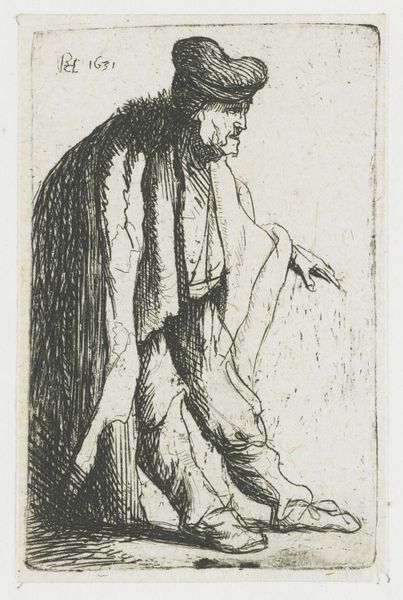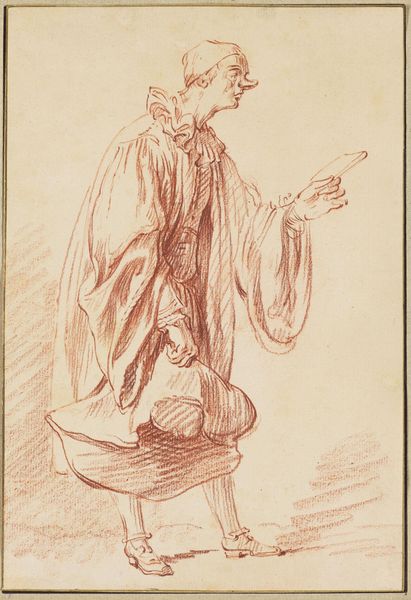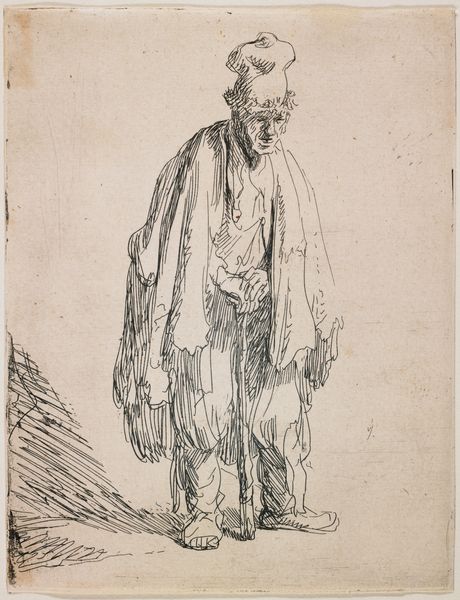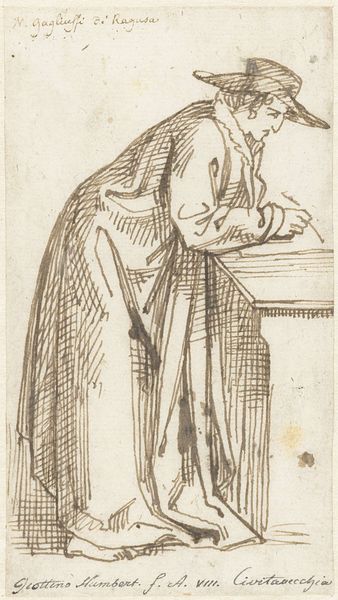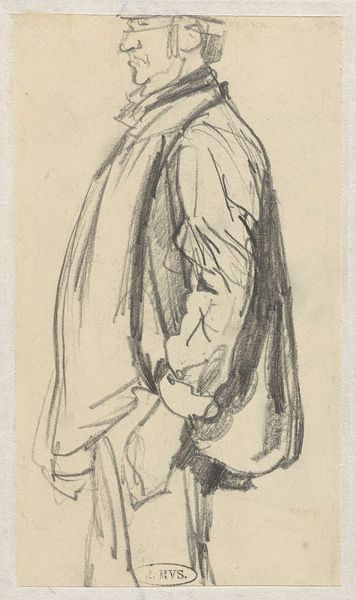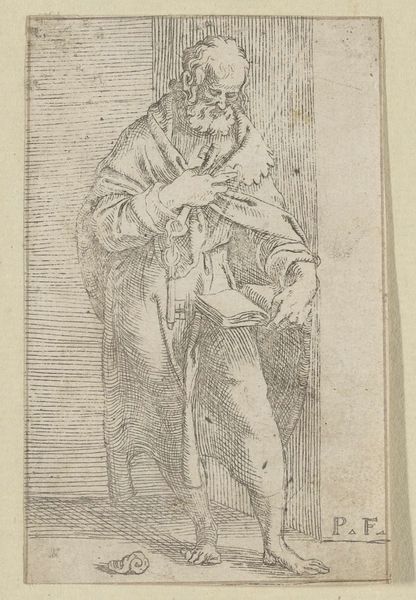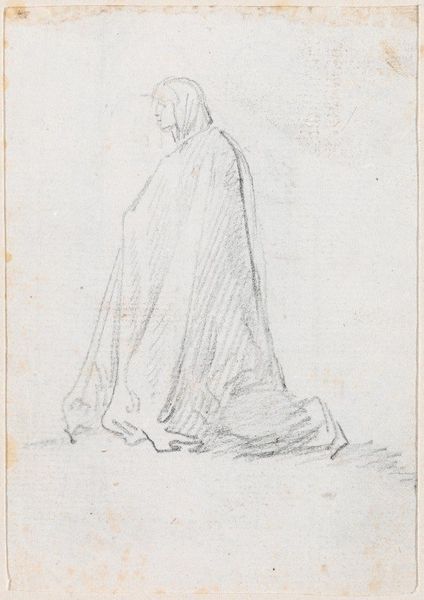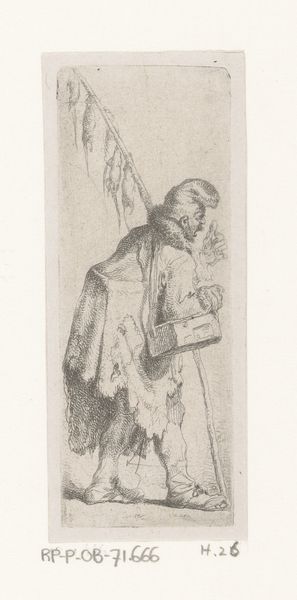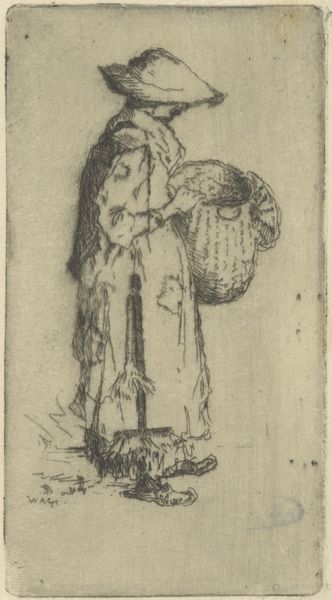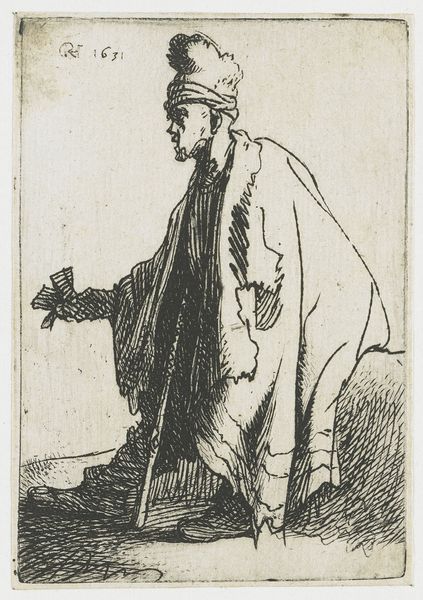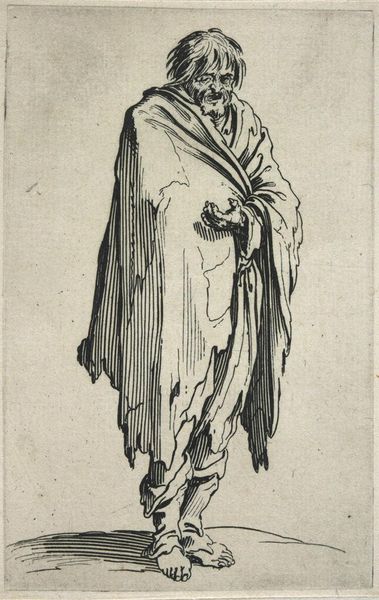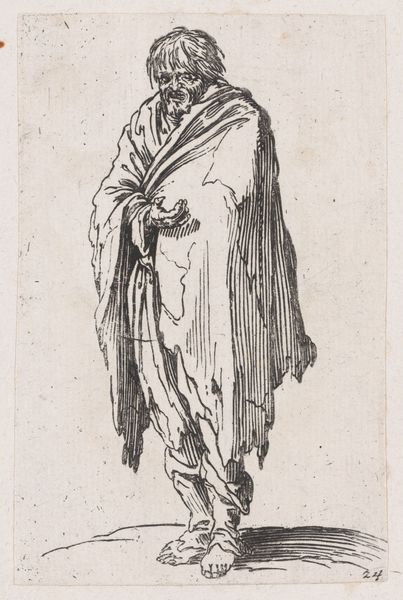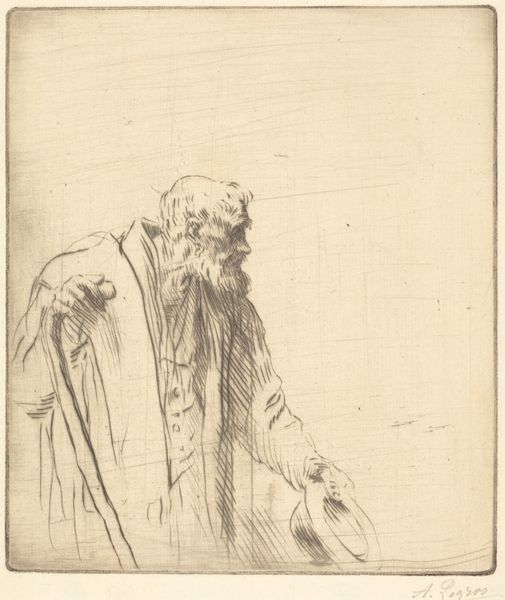
drawing, ink, pen
#
portrait
#
drawing
#
baroque
#
pen sketch
#
pencil sketch
#
figuration
#
ink
#
pen-ink sketch
#
pen
#
genre-painting
Dimensions: height 63 mm, width 41 mm
Copyright: Rijks Museum: Open Domain
Curator: There’s a haunting quality to this ink drawing, a certain melancholy that emanates from it. Editor: Indeed. What you are observing is "Beggar with his left hand extended", a drawing crafted around 1629 by Rembrandt van Rijn, housed at the Rijksmuseum. The scene features, quite simply, a beggar rendered in a flurry of lines, primarily using pen. Curator: I'm immediately struck by the man's expression. Is it supplication? Resignation? A world-weariness etched onto his face. It’s so raw, you know? As if he’s seen… everything. And look at the hand—reaching, but barely. Editor: Absolutely, the extended hand can be seen as a direct challenge to the socio-economic structures prevalent during Rembrandt’s time. It invites a dialogue about visibility, poverty, and who is deemed worthy of representation. He renders the social margins. The ink mimics shadows and darkness, perhaps deliberately pointing to hidden populations? Curator: Shadows, yes! And the frenetic energy of the lines, that feeling like a restless urgency about it… it’s not just darkness he renders, but an inner torment, or an agitated spirit. It isn't a still life, the way he moves with ink! It's like a dance. Do you think Rembrandt aimed to capture their essence—like a performance—instead of simply documenting their likeness? Editor: Perhaps. The choice of subject matter itself becomes a political statement. Was Rembrandt merely observing, or actively engaging in a critique of the social disparities he witnessed? Who decides, moreover, whose story gets etched into permanence through art? This single drawing throws into question the very power structures embedded in art history, wouldn’t you say? Curator: Absolutely, that rings true. The beauty in this small, poignant portrait lies precisely in how Rembrandt refused to avert his eyes. What stays with me is not just the figure's hardship but Rembrandt’s empathy—or perhaps even his outrage! Editor: The fact that this sketch—executed centuries ago—continues to provoke and discomfort, shows art is capable of bridging temporal divides, allowing us to critically examine our shared humanity and societal obligations. Food for thought, indeed!
Comments
No comments
Be the first to comment and join the conversation on the ultimate creative platform.
